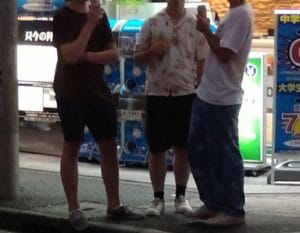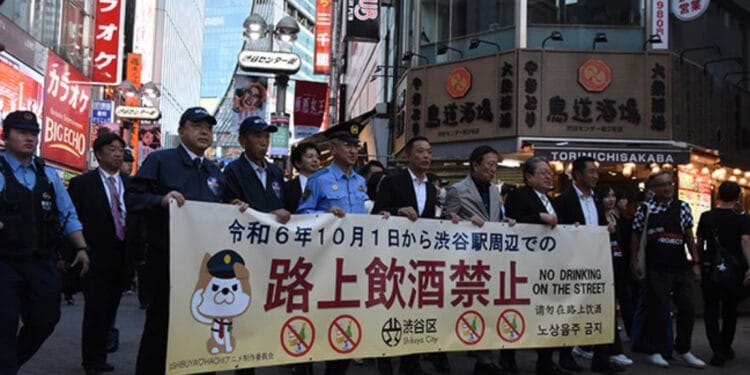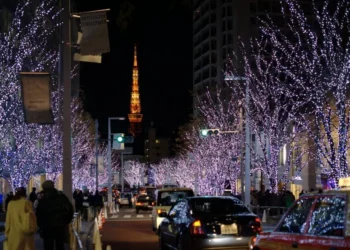No products in the cart.
No Public Drinking Near Shibuya Station: What to Know
Introduction
In 2023, a new regulation was implemented prohibiting public drinking near Shibuya Station during significant events such as Halloween and New Year’s Eve. This initiative, introduced by the Shibuya Ward government, aims to curb unruly behavior and uphold public order. Shibuya has been a popular destination for both tourists and locals, especially during festive occasions like Halloween when the streets come alive with costumed participants. However, as these gatherings became more frequent, there was a noticeable rise in public intoxication, litter, and disturbances. To address these concerns and preserve the area’s safety and reputation, the Shibuya drinking ban was established.
But could this measure be adopted in other regions of Japan? It’s worth examining the motivations behind this rule, the factors that led to its creation, and its potential effects on other areas across the country. Implementing similar restrictions during festivals could help maintain the cultural identity of cities while ensuring that large crowds remain manageable.
Moreover, Japan has been increasingly focusing on public safety and order, particularly in the aftermath of the COVID-19 pandemic. As part of this trend, several cities may consider introducing more regulations regarding public behavior, including alcohol consumption, in crowded spaces.
Why Shibuya Banned Public Drinking
Shibuya Station, located in Tokyo, is one of the busiest train stations in the world and sits at the heart of the city’s nightlife. For years, the area around the station has been a central gathering place for Halloween parties and New Year’s Eve celebrations. During these events, the sheer number of people flooding the streets has led to problems with public drunkenness, noise, litter, and even occasional vandalism. While these festivities attracted thousands of people, they also overwhelmed the area, prompting concerns from local businesses and residents.
In response to growing complaints, the Shibuya Ward government decided to enforce stricter rules during peak times. One of the main reasons for introducing this ban was to prevent chaotic behavior linked to alcohol consumption. In recent years, Halloween celebrations in Shibuya became infamous for rowdy crowds, with several instances of public brawls, property damage, and excessive littering. A famous incident in 2018 saw a small truck flipped over by a group of intoxicated partygoers, leading to arrests and heightened concerns from both the community and officials.
Shibuya’s mayor, Ken Hasebe, has been a key advocate for promoting public safety in the area. He has stated that while Shibuya welcomes people to celebrate and have fun, the goal is to create a more responsible and respectful atmosphere. To that end, the ban on drinking in public places around Shibuya Station was introduced for Halloween and New Year’s Eve, effectively limiting alcohol consumption during the busiest nights of the year. The restriction extends from October 27 to October 31 and December 31 to January 1, covering the periods when crowds are most likely to get out of control.
How the Ban Works
The public drinking ban in Shibuya specifically applies to streets, parks, and other public areas around Shibuya Station. During the restricted periods, signs are placed around the station and surrounding areas, and local officials, along with the police, are tasked with enforcing the rule. Those caught drinking in public during these times are asked to stop, and while there are no harsh penalties like fines, the emphasis is on preventing issues before they arise.
Alcohol is still allowed in designated indoor venues like bars, restaurants, and clubs, meaning that people can still celebrate in controlled environments. The focus of the ban is outdoor drinking, which is seen as the primary source of disturbances during large gatherings.

What Caused the Rule to Take Effect?
The driving force behind the rule was the need to address public safety and cleanliness concerns. Shibuya is a major commercial and residential area, and the large gatherings during events like Halloween posed a significant burden on local resources. The cost of cleaning up after these events, along with the strain on law enforcement, made it clear that changes were needed. Additionally, incidents of violence and vandalism linked to alcohol consumption heightened fears that the situation could spiral out of control if not addressed.
The rise of Halloween as a major event in Japan is relatively recent, with Shibuya becoming the epicenter for massive street parties. However, the cultural shift towards public celebrations of Halloween brought challenges that the area had not previously experienced on such a scale. The combination of alcohol, large crowds, and the excitement of the holiday created an environment that was ripe for disturbances. After several high-profile incidents, including the truck-flipping in 2018, local authorities realized that stronger measures were needed to ensure the safety and well-being of the community.
Expanding Drinking Bans to Other Cities in Japan
The success of Shibuya’s public drinking ban has prompted discussions about whether similar restrictions could be introduced in other parts of Japan. Cities like Osaka, Fukuoka, and Kyoto also experience large crowds and public celebrations, especially during festivals or holidays, where managing alcohol consumption might help reduce public disturbances and ensure safety.
In Osaka, a city known for its vibrant nightlife, public drinking has been a concern in areas like Dotonbori. During events like New Year’s Eve, massive gatherings often lead to problems such as noise, littering, and rowdy behavior. By introducing a temporary drinking ban during such times, Osaka could better manage these challenges and improve safety for both residents and visitors.
The Cultural Impact
Public drinking in Japan is traditionally more accepted than in many other countries. It is common to see people enjoying beer or sake in parks, at festivals, or during hanami (cherry blossom viewing). However, large-scale events like Halloween in Shibuya have highlighted the potential downsides of unregulated drinking, particularly when it comes to maintaining public order in densely populated urban areas.
The Shibuya drinking ban is a reflection of the changing attitudes towards public behavior in Japan, particularly in major cities where tourism and large events have grown rapidly. While the culture of public drinking is unlikely to disappear entirely, the introduction of these rules shows that there is a growing awareness of the need to balance public enjoyment with community safety.
Conclusion
The ban on public drinking near Shibuya Station was enacted in response to the issues arising from large crowds during celebrations such as Halloween and New Year’s Eve. This regulation is intended to promote public safety, maintain order, and lessen the strain on local resources. Currently, this restriction is specific to Shibuya, but its positive outcomes might motivate other cities in Japan to consider implementing similar measures during significant events or festivals.
As Japan adapts its approach to tourism and public safety, we may witness the introduction of more regulations like this one in busy areas. While public drinking is a traditional aspect of Japanese culture, such rules aim to foster a safer and more pleasant environment for all participants.










